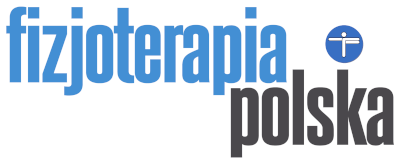Samit Saibya, Gayatri Pandey, Alpesh Chandrakant Jadhav, Yajuvendra Singh Rajpoot, Karuppasamy Govindasamy, Surojit Sarkar, Hemantajit Gogoi
Samit Saibya, Gayatri Pandey, Alpesh Chandrakant Jadhav, Yajuvendra Singh Rajpoot, Karuppasamy Govindasamy, Surojit Sarkar, Hemantajit Gogoi – Impact of circuit training on physical fitness among team sports athletes: A systematic review – Fizjoterapia Polska 2024; 24(1); 244-257
DOI: https://doi.org/10.56984/8ZG2EF82sK
Abstract
Background of the Study. Physical fitness is crucial for athletes, enabling them to endure rigorous training and meet competitive demands effectively. It encompasses both health-related attributes, such as cardiovascular endurance and muscular strength, and skill-related components like agility and speed. Various training methods, including circuit training (CT), have been explored to enhance fitness levels among athletes. Despite the growing popularity of CT in various sports, comprehensive research on its effects on athletes’ physical fitness has been limited.
Aim. The present review aims to clarify the effects of CT on physical fitness among team sports Athletes.
Material and Methods. In accordance with the Preferred Reporting Items for Systematic Reviews and Meta-Analyzes (PRISMA) Statement guidelines, the systematic search of PubMed and Google Scholar databases was undertaken on the 28th of August, 2023, to identify the reported studies, using a combination of keywords related to CT, physical fitness, and athletes. Of the 566 studies, only 18 articles met all eligibility criteria and were included in the systematic review. The assessment was performed on the Pedro scale, and the study quality included in the eighteen studies was fair (ranging from 5 to 6).
Results. The results showed that speed (n = 12) was the aspect of physical fitness studied in CT interventions, followed by muscular strength (n = 10), power (n = 13), balance (n = 2), body composition (n = 2), agility (n = 14), flexibility (n = 5), muscular endurance (n = 7), and cardiovascular endurance (n = 8). Existing evidence concludes that CT significantly impacts speed, muscular strength, power, balance, flexibility, agility, body composition, and cardiovascular endurance.
Conclusions: The CT method is one of the ways of physical fitness training aiming at general development, which includes all the physical aspects. Furthermore, there is still limited numbers of evidence showing the effect of CT on agility, body composition, and speed.
Keywords
circuit training, physical fitness, team sport, athletes

